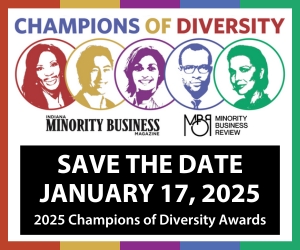Indiana nonprofits work to close gender pay gap
By Oseye Boyd
When Jan Virgin learned she made less money as executive director of Dance Kaleidoscope than the male artistic director, she demanded pay equity.
“I wouldn’t stand for it,” Virgin said. “One day we were talking and said, ‘This is absolutely ridiculous. We do the same job.’”
Today, both directors receive the same salary. However, it’s not unusual for women employed by nonprofits to receive less compensation than men in similar positions.
Women hold the top spot in about 72 percent of nonprofits, according to Leading with Intent’s 2017 report. A 2016 study from GuideStar revealed women who headed nonprofits made eight percent less than their male peers. This pay disparity is a “sleeper threat to nonprofit effectiveness and sustainability,” according to an article from the National Council of Nonprofits.
New dancers with Dance Kaleidoscope all receive the same pay, Virgin said. Pay for office staff is based on the responsibilities of the position, not gender, she added.
Closing the pay gap may seem daunting for any organization. For nonprofits, whose tight budgets already are stretched thin, it may seem insurmountable.
It’s not.
Three years ago FirstPerson completed a salary study for Keep Indianapolis Beautiful. That study helped the nonprofit determine the correct salary range for each position as well as what it could afford to pay employees in those positions. While the focus wasn’t on closing the gender gap, it was an unintended consequence.
“We, actually, since that study have spent the past two or three years getting people to a place that we consider a minimum of what our aspirations are,” said David Forsell, Keep Indianapolis Beautiful president.
Keep Indianapolis Beautiful did the study to make the organization as competitive as possible with for-profit companies, Vice President of Finance and Administration Jenny Skehan said.
Before an organization determines salaries, it should decide its compensation philosophy. It must decide if salaries should be in the bottom, middle or top of the pay range for that market. Once the philosophy is established, it’s time to look at the compensation range for individual positions, Julie Bingham, compensation advisor at FirstPerson, said.
“For nonprofits the mission of the organization is often a very fair exchange of being paid more somewhere else because it’s very meaningful work, but pay can’t be so low that you feel exploited or that you literally can’t pay the bills,” Bingham said.
Knowing the pay range for an individual position helps an organization decide the salaries for someone with little to no experience or someone with years under his or her belt.
“The challenge is there are entire job families and career paths that have been traditionally filled by females, and the market’s just reinforcing those pay inequities,” Bingham said. That’s another hurdle the world is trying to tackle.”
A salary study and compensation philosophy also keeps nonprofits honest with employees by allowing them to explain why salaries may be lower than the market range, but there’s a plan in place to raise them as the financial situation allows.
“One of the best things the data does is it neutralizes the emotions and it empowers decision making,” Bingham said. I










